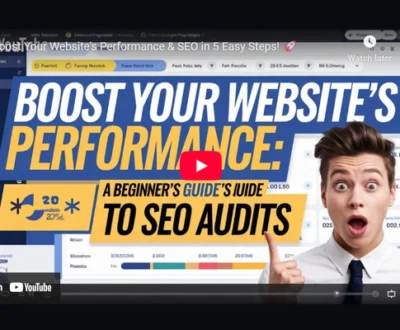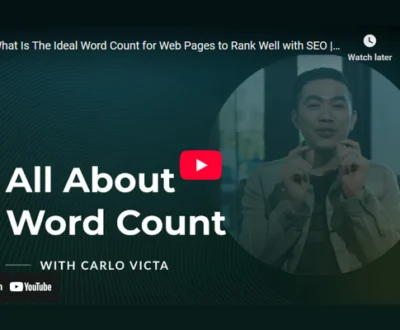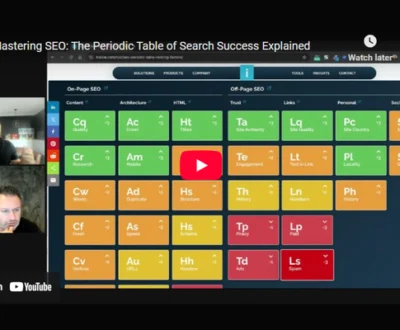I know site speed is critical for on-page SEO success because Google favors faster-loading pages, which rank higher and reduce bounce rates. Quick pages keep visitors engaged and improve conversions, especially on mobile devices. Core Web Vitals measure these factors, making speed crucial for SEO performance. Optimizing server response and minimizing load times also boosts user experience and crawl efficiency. If you want to understand how these technical improvements give your site an edge, keep exploring these key concepts.
- Key Takeaways
- The Role of Page Speed as a Google Ranking Factor
- How Site Speed Influences User Experience and Engagement
- Core Web Vitals and Their Impact on SEO Performance
- The Connection Between Mobile Page Speed and Mobile-First Indexing
- Technical SEO Benefits of Optimizing Site Load Times
- Strategies to Improve Server Response and Reduce TTFB
- Competitive Advantages Gained Through Faster Website Performance
- The Effect of Page Speed on Bounce Rates and Conversion Rates
- Leveraging Real-User Monitoring for Speed Optimization Insights
- Frequently Asked Questions
- How Does Site Speed Impact SEO for Local Versus Global Audiences?
- Can Site Speed Improvements Affect Paid Search Ad Quality Scores?
- What Role Does Site Speed Play in Voice Search Rankings?
- How Do Different Content Management Systems Influence Site Speed SEO?
- Is There a Speed Threshold Where SEO Benefits Plateau or Decline?
- Final Thoughts
Key Takeaways
- Fast site speed improves Google rankings by enhancing user experience and meeting Core Web Vitals benchmarks.
- Slow-loading pages increase bounce rates, reducing user engagement and harming SEO performance.
- Mobile-first indexing prioritizes fast mobile page speeds for better search visibility and traffic.
- Optimized server response times ensure quicker content delivery, boosting crawl efficiency and site reliability.
- Better page speed leads to higher conversion rates and longer session durations, positively impacting SEO metrics.
The Role of Page Speed as a Google Ranking Factor
Page speed plays an essential role in how Google ranks websites, especially since it directly affects both desktop and mobile search results.
Since the Speed Update in 2018, Google has made page speed optimization a clear priority, particularly for mobile searches. Ranking algorithms now consider how quickly pages load, which means faster websites are more likely to appear higher in search results.
This change reflects Google’s broader focus on user experience, as slow-loading sites often lead to increased bounce rates and reduced engagement. Tools like Google’s PageSpeed Insights help site owners measure load times and identify improvements.
While page speed is one of many factors influencing rankings, neglecting it can hinder your SEO efforts. Understanding how ranking algorithms weigh speed alongside relevance allows you to prioritize optimization effectively.
In short, focusing on page speed optimization is vital for improving your site’s visibility and staying competitive in search engine results.
How Site Speed Influences User Experience and Engagement
I’ve noticed that even a slight delay in load time can cause visitors to leave before they engage with the content, which directly raises bounce rates.
Maintaining fast page speeds encourages users to stay longer, increasing their interaction and overall dwell time on the site.
This is especially important for mobile users, who often face slower connections and expect quick access to information.
Load Time and Bounce
How much does load time really affect whether someone stays on your site? Quite a bit, actually.
Studies show that bounce rates rise sharply when load time exceeds three seconds, with users quickly leaving slow-loading pages. This directly impacts user retention and satisfaction metrics, especially on mobile devices where expectations for speed are high.
In ecommerce, the impact is even clearer—each extra second can cause significant conversion drops, sometimes by over 4%, which affects overall sales.
Mobile optimization plays a vital role here, as slower mobile site performance leads to higher bounce rates and lost customers.
Improving load time not only reduces bounce but boosts user engagement and conversion, making fast site performance essential for SEO success and competitive advantage.
Engagement and Dwell
Since user engagement and dwell time directly reflect how visitors interact with your site, improving site speed plays a crucial role in enhancing these metrics.
When pages load quickly, users tend to stay longer, increasing dwell time and encouraging deeper exploration. This directly supports effective engagement strategies, as faster sites create a smoother, more satisfying experience that keeps visitors interested.
Conversely, slow-loading pages frustrate users, causing them to leave sooner, which reduces both engagement and dwell time.
By prioritizing site speed, you not only improve user satisfaction but also boost key SEO factors like Core Web Essentials.
Ultimately, faster site performance helps maintain visitor interest, supports better engagement strategies, and increases the likelihood of conversions, making it a significant component of on-page SEO success.
Mobile Speed Importance
Building on the importance of engagement and dwell time, mobile site speed plays a significant role in shaping user experience and interaction.
Mobile users have high expectations for fast, responsive sites, influenced by their daily use of quick, reliable apps. When pages load slowly, it triggers stress responses similar to waiting in long lines or tackling difficult tasks, which can frustrate users and increase bounce rates.
Fast mobile sites not only improve user satisfaction but also build trust and perceived reliability, essential for retaining visitors. Since search engines prioritize mobile-first indexing, optimizing mobile speed boosts SEO rankings.
Meeting mobile user expectations with efficient load times ultimately enhances engagement, reduces stress, and supports smoother navigation, making mobile speed a critical factor in on-page SEO success.
Core Web Vitals and Their Impact on SEO Performance
Although Core Web Vitals might not carry the same weight as content relevance or authority in SEO rankings, they still play an important role in determining your site’s search performance. These metrics focus on User Experience through Loading Performance, Visual Stability, and Interactivity Assessment. Google uses Core Web Vitals as ranking signals, impacting SEO relevance and user engagement. Poor scores can increase bounce rates and lower conversion rates, indirectly affecting your search visibility.
Here’s a quick overview:
| Metric | Focus Area | Target Goal |
|---|---|---|
| Largest Contentful Paint (LCP) | Loading Performance | ≤2.5 seconds |
| First Input Delay (FID) | Interactivity Assessment | ≤100 milliseconds |
| Cumulative Layout Shift (CLS) | Visual Stability | ≤0.1 score |
Optimizing these Performance Metrics improves User Experience, boosts SEO relevance, and can enhance conversion rates, making Core Web Vitals a significant part of your on-page SEO success.
The Connection Between Mobile Page Speed and Mobile-First Indexing
Since Google now uses mobile-first indexing, the speed of your mobile pages plays an essential role in how your site ranks.
Optimizing load times on smartphones isn’t just about user experience; it directly affects crawling efficiency and search visibility.
I’ll explain how improving mobile page speed aligns with this indexing approach and boosts your SEO success.
Mobile-First Indexing Impact
When Google switched to mobile-first indexing, it shifted the focus to how well websites perform on mobile devices, making mobile page speed a key factor in search rankings.
This change means that mobile content must match desktop versions to avoid indexing challenges that can lower visibility. If mobile pages load slowly or lack important content, Google may rank the site lower, impacting traffic.
Mobile-first indexing also prioritizes user experience on smaller screens, so fast, streamlined pages improve engagement and reduce bounce rates.
Ensuring your mobile site is optimized for speed helps Google crawl your pages efficiently and maintain your SEO standing.
Ultimately, addressing mobile page speed is essential to succeed under Google’s mobile-first indexing approach.
Optimizing Mobile Load Times
Optimizing mobile load times plays a direct role in how well your site performs under mobile-first indexing. To enhance speed, start with image optimization by compressing files, using responsive images, and replacing GIFs with lighter alternatives like videos.
Employ caching techniques such as browser and mobile caching to reduce repeated data requests, improving load times and conserving battery life. Code minification and combining files cut down page weight and HTTP requests, speeding up rendering.
Choose mobile themes with responsive design to guarantee consistent, fast display across devices. Utilize CDN usage to deliver content quickly from servers near users.
Finally, performance monitoring with tools like PageSpeed Insights helps identify bottlenecks, allowing continuous improvements that keep your mobile site fast and SEO-friendly.
Technical SEO Benefits of Optimizing Site Load Times
Although many factors influence SEO success, improving your site’s load times plays a crucial role in technical SEO. Faster load times enhance site architecture by allowing search engine bots to navigate your pages more efficiently within their crawl budget. This supports better indexation strategies, reducing errors caused by timeouts and guaranteeing more complete coverage.
Improved site speed also positively affects user signals and engagement metrics, such as lower bounce rates and longer session durations, which search engines consider when ranking pages. Meeting performance benchmarks through server optimization and effective resource management reduces server strain, increasing uptime and reliability.
Additionally, these technical SEO improvements form a strong foundation for scalability strategies, making it easier to handle future growth in content and traffic without compromising speed. By focusing on these aspects, you guarantee your site remains accessible, understandable, and competitive in search rankings over the long term.
Strategies to Improve Server Response and Reduce TTFB
Since server response time directly affects how quickly your site begins loading, reducing the Time to First Byte (TTFB) is essential for both user experience and SEO performance.
To improve server response, start by choosing a hosting provider with a strong infrastructure and data centers near your audience. Upgrading to a dedicated or VPS server can also allocate resources more efficiently than shared hosting.
Implementing server-side caching, like Redis or Memcached, helps serve content faster by reducing database queries. Optimizing backend code and database queries minimizes delays caused by inefficient processing.
Additionally, enabling modern technologies such as HTTP/2 and SSD storage accelerates data delivery. Techniques like GZIP compression and minimizing HTTP requests further reduce server response time.
Competitive Advantages Gained Through Faster Website Performance
When your website loads faster, you gain several competitive advantages that directly impact your search engine rankings and user engagement. Faster performance gives you a competitive edge by improving your SERP positioning and increasing your click-through rates. It also enhances user retention by providing a smooth, responsive experience that encourages visitors to stay longer. Over time, this leads to stronger brand loyalty as users associate your site with reliability. Ultimately, these factors drive revenue growth by attracting and keeping more customers.
Here’s a quick overview of the key benefits:
| Advantage | Impact |
|---|---|
| Competitive Edge | Higher search rankings, better crawl budget efficiency |
| User Retention | Lower latency, improved engagement, seamless navigation |
| Brand Loyalty & Revenue Growth | Builds trust, boosts repeat visits, increases conversions |
Optimizing site speed is essential for establishing a lasting presence in your market, improving both SEO success and business outcomes.
The Effect of Page Speed on Bounce Rates and Conversion Rates
Understanding how page speed influences both bounce rates and conversion rates is essential for optimizing any website’s performance. When load time exceeds 3 seconds, over half of mobile visitors leave immediately, sharply increasing the bounce rate.
Even a 2-second delay can double bounce rates, highlighting how critical page speed is for user retention. Ecommerce sites with load times under 1 second see conversion rates 2.5 times higher than those loading in 5 seconds, proving page speed directly supports conversion optimization.
Maintaining load times close to or below 1 second aligns with industry speed benchmarks, maximizing engagement metrics and reducing bounce. Improving website performance within the 1-to-3-second range yields significant gains in both bounce rate reduction and conversion.
Beyond 5 seconds, bounce rates spike drastically, indicating serious performance issues. Prioritizing faster page speed isn’t just about SEO—it’s about keeping users engaged, lowering bounce rates, and boosting conversions, which together enhance the overall success of your site.
Leveraging Real-User Monitoring for Speed Optimization Insights
Improving page speed is a continuous effort that benefits greatly from real-world data, which is where Real-User Monitoring (RUM) comes into play. By collecting performance metrics directly from users, RUM offers valuable data insights into actual user experience.
It helps with bottleneck identification by revealing slow load times and server delays that affect page responsiveness. Transaction monitoring tracks every step users take, allowing detailed analysis of device performance and regional insights. This means you can pinpoint if specific devices or areas face issues, guiding targeted improvements.
Client-side optimization benefits from RUM by focusing on browser performance, guaranteeing smoother interactions. Implementing custom integration lets you tailor RUM tools to your site’s unique needs.
Perhaps most importantly, RUM creates a continuous feedback loop, where ongoing data collection drives constant enhancement. Using RUM guarantees your speed optimization is precise, user-centered, and adaptive to real-world conditions, ultimately boosting on-page SEO success.
Frequently Asked Questions
How Does Site Speed Impact SEO for Local Versus Global Audiences?
I know site speed boosts local optimization by delivering quick, relevant results nearby, while for global reach, it guarantees fast loading worldwide using CDNs. Both are essential, but local users expect immediate access more urgently.
Can Site Speed Improvements Affect Paid Search Ad Quality Scores?
Think of site speed as the engine revving for your ads. When I improve it, ad performance soars because user experience feels seamless, boosting quality scores and lowering costs. Speed truly drives better paid search results.
What Role Does Site Speed Play in Voice Search Rankings?
I know voice search demands super-fast responses, so site speed becomes a key ranking factor. Slow sites lose visibility because users bounce quickly, and Google rewards fast-loading pages by boosting their voice search rankings.
How Do Different Content Management Systems Influence Site Speed SEO?
Think of CMS optimization as tuning an engine. Platform comparison, theme selection, and plugin impact all shape your site’s speed. Choosing lean themes and minimal plugins keeps your SEO engine running smoothly and your pages loading fast for visitors.
Is There a Speed Threshold Where SEO Benefits Plateau or Decline?
I’ve found that SEO benefits plateau once a site hits its speed threshold, often around 2.5 seconds LCP. Beyond that, faster speeds help UX but don’t boost rankings much unless speeds degrade drastically.
Final Thoughts
Improving site speed is like tuning a race car—it directly impacts your SEO performance and user experience. Faster load times reduce bounce rates and boost engagement, helping your site rank higher on Google. By focusing on Core Web Essentials, mobile speed, and server response, you gain technical advantages that support mobile-first indexing and competitive positioning. Using real-user monitoring, you can identify issues and optimize effectively, ensuring your site runs smoothly and meets both search engine and visitor expectations.
Windee Tan is a seasoned SEO Specialist with over a decade of experience helping businesses grow their organic visibility through data-driven strategies. He specializes in technical SEO, content optimization, and local search, with deep knowledge of tools like GA4, GSC, SEMrush, and Screaming Frog. Windee is passionate about translating complex SEO insights into practical tactics that drive real-world results. When he's not auditing sites or crafting keyword strategies, he’s exploring the latest trends in AI, digital marketing, and productivity.
About this blog
We are a digital marketing company with a focus on helping our customers achieve great results across several key areas.
Request a free quote
We offer professional SEO services that help websites increase their organic search score drastically in order to compete for the highest rankings even when it comes to highly competitive keywords.
Subscribe to our newsletter!
More from our blog
See all postsRecent Posts
- Writing Clear Calls to Action That Boost On-Page SEO 21 August 2025
- Why Word Count Still Matters in On-Page SEO Today 20 August 2025
- Why Site Speed Is Critical for On-Page SEO Success 19 August 2025









